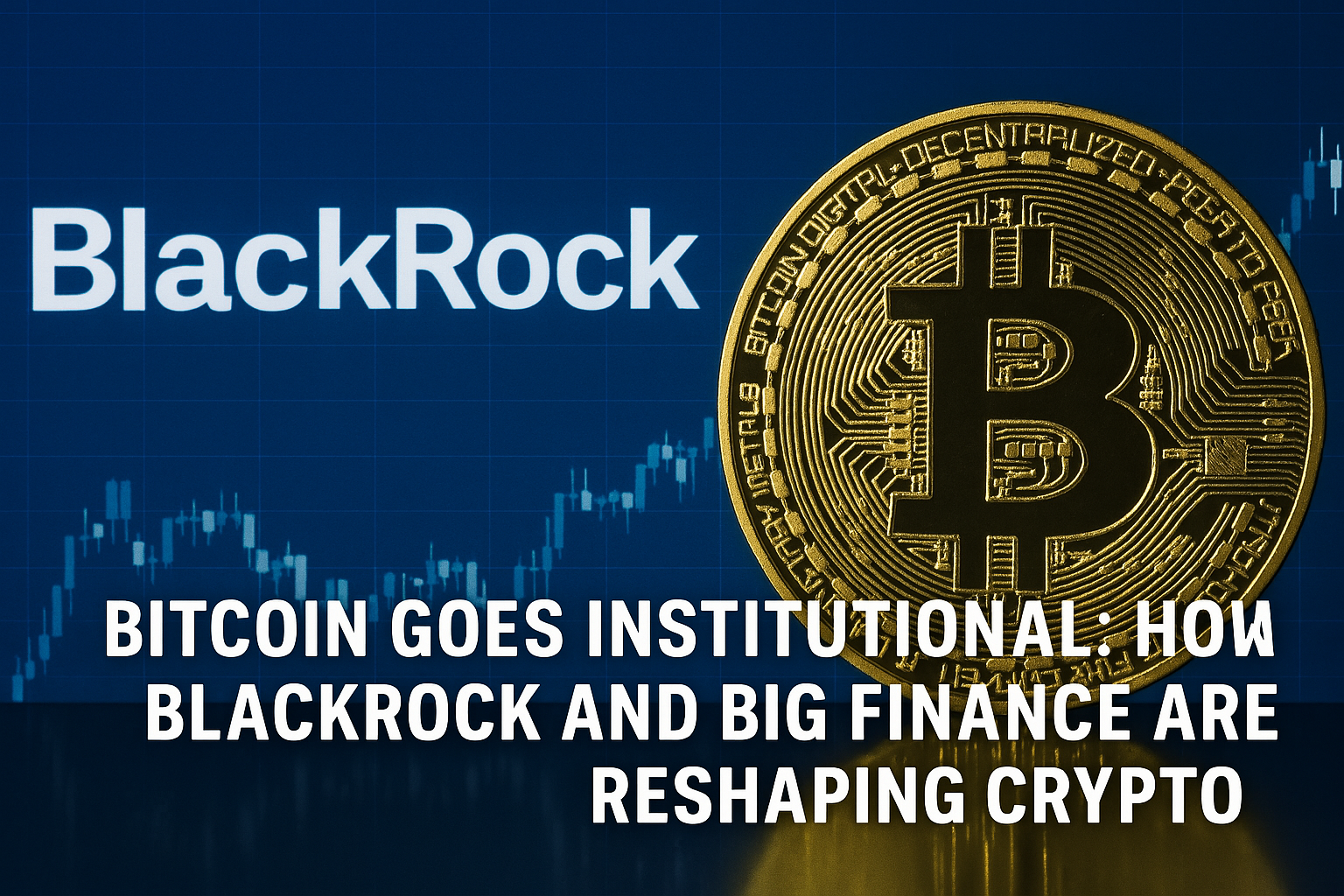
In 2025, the story of cryptocurrency is no longer about fringe innovation or retail speculation—it’s about Wall Street. As major financial institutions like BlackRock, Fidelity, and JPMorgan deepen their involvement in digital assets, Bitcoin is moving from tech subculture to institutional mainstay.
The shift isn’t subtle. With billions in assets flowing into Bitcoin-backed investment products, Big Finance is reshaping the crypto ecosystem—and the rules that govern it.
⸻
1. BlackRock Leads the Charge in the U.S. and Europe
BlackRock made headlines by launching its iShares Bitcoin ETP in Europe this March. Following massive success in the U.S., where its Bitcoin ETF attracted over $50 billion in assets under management, the firm is now expanding globally.
• Domiciled in Switzerland, the ETP is listed on exchanges in Paris, Amsterdam, and Frankfurt.
• Coinbase serves as the custodian, while Bank of New York Mellon manages the fund administration.
This expansion sends a strong signal: crypto is no longer experimental—it’s institutional.
⸻
2. Why Big Finance Is Going Big on Bitcoin
Institutional interest in Bitcoin is being driven by several key factors:
• Inflation hedging: Bitcoin is increasingly seen as digital gold, especially in high-interest environments.
• Diversification: Pension funds and wealth managers are looking for non-correlated assets to offset equity volatility.
• Regulatory clarity: The introduction of regulated ETFs has reduced compliance risk for traditional firms.
For large asset managers, Bitcoin now fits the same risk-reward profile as emerging market equities or commodities.
⸻
3. The Impact on Retail Investors and the Market
Institutional participation is bringing new levels of legitimacy and liquidity to the market. It also introduces more stable price floors, as institutional buying tends to be long-term.
But there’s a trade-off:
• Volatility is decreasing, which can reduce explosive short-term gains.
• Retail dominance is fading, meaning the market is less influenced by meme trends or panic selling.
What we’re witnessing is the maturing of the Bitcoin market—and for many, that’s a welcome evolution.
⸻
4. ETFs Are Just the Beginning
Beyond Bitcoin ETFs, institutions are expanding into:
• Staking products for Ethereum and other proof-of-stake assets
• Tokenized funds and real-world asset (RWA) platforms
• Digital treasury strategies, where companies hold Bitcoin as a balance-sheet asset (as Tesla and MicroStrategy pioneered)
Expect to see 401(k) crypto offerings and bank-issued stablecoins become more common by year’s end.
⸻
5. Regulatory Influence Will Follow the Money
As institutions invest, regulators are following closely. Clearer frameworks from the SEC, EU, and global banking regulators are expected to:
• Encourage more conservative investors to enter
• Crack down on unregistered or opaque offerings
• Push the market toward KYC-compliant, regulated platforms
In short: the Wild West era is over. Bitcoin is now moving into a phase of financial integration and compliance.
⸻
Final Thoughts: The Bitcoin Blueprint Is Changing
In 2025, Bitcoin isn’t just for early adopters and day traders—it’s a foundational piece of modern institutional strategy. With BlackRock and other financial giants leading the charge, crypto is being reshaped from the inside out.
This is not the end of decentralization—but it is the beginning of a new chapter in Bitcoin’s global journey: one defined by legitimacy, structure, and scale.